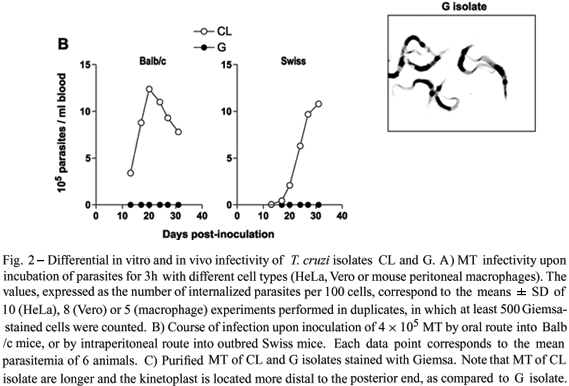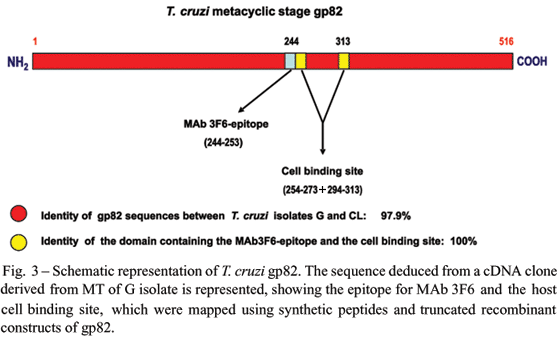Establishment of infection by Trypanosoma cruzi, the agent of Chagas' disease, depends on a series of events involving interactions of diverse parasite molecules with host components. Here we focus on the mechanisms of target cell invasion by metacyclic trypomastigotes (MT) and mammalian tissue culture trypomastigotes (TCT). During MT or TCT internalization, signal transduction pathways are activated both in the parasite and the target cell, leading to Ca2+ mobilization. For cell adhesion, MT engage surface glycoproteins, such as gp82 and gp35/50, which are Ca2+ signal-inducing molecules. In T. cruzi isolates that enter host cells in gp82-mediated manner, parasite protein tyrosine kinase as well as phospholipase C are activated, and Ca2+ is released from I P3-sensitive stores, whereas in T. cruzi isolates that attach to target cells mainly through gp35/50, the signaling pathway involving adenylate cyclase appears to be stimulated, with Ca2+ release from acidocalciosomes. In addition, T. cruzi isolate-dependent inhibitory signals, mediated by MT-specific gp90, may be triggered both in the host cell and the parasite. The repertoire of TCT molecules implicated in cell invasion includes surface glycoproteins of gp85 family, with members containing binding sites for laminin and cytokeratin 18, enzymes such as cruzipain, trans-sialidase, and an oligopeptidase B that generates a Ca2+-agonist from a precursor molecule.
Trypanosoma cruzi; trypomastigotes; cell invasion; signal transduction; Ca2+ mobilization










